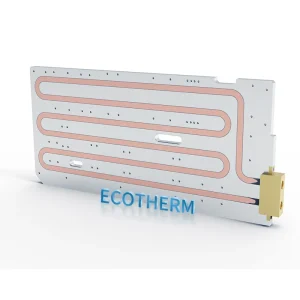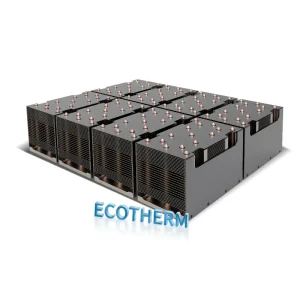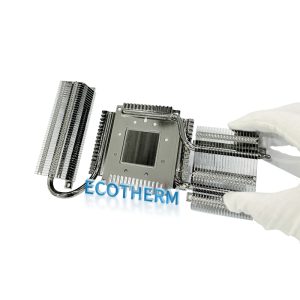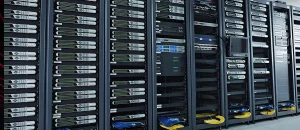How to Choose the Best GPU Cooler for Top Performance
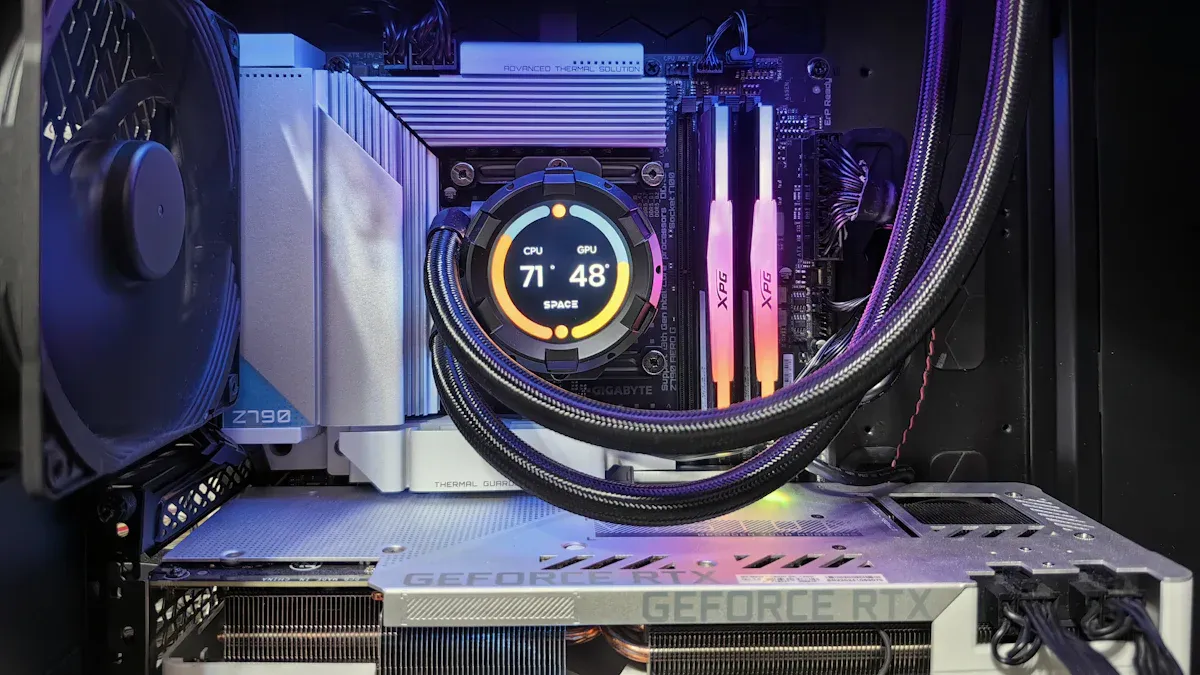
To achieve top performance from your graphics card, you need to choose a gpu cooler that matches your hardware and workload. Focus on compatibility, cooling efficiency, noise level, and build quality. Always match the cooler type to your GPU’s TDP and your usage needs. Compare air, liquid, and hybrid options to find the right balance between performance and budget. Proper installation and regular maintenance help you maximize cooling results.
Key Takeaways
- Choose a GPU cooler that matches your graphics card and workload for optimal performance.
- Effective cooling prevents thermal throttling, ensuring smoother visuals and better responsiveness during demanding tasks.
- High temperatures can damage your GPU over time; proper cooling extends its lifespan and protects your investment.
- Understand the three main types of GPU coolers: air, liquid, and hybrid, each with unique benefits and drawbacks.
- Always check compatibility with your GPU model and case size before purchasing a cooler.
- Regular maintenance, including cleaning and thermal paste reapplication, keeps your cooler performing efficiently.
- Monitor for signs of overheating, such as loud fan noise or system crashes, to address cooling issues promptly.
- Invest in a high-quality cooler with a strong warranty to ensure long-term reliability and performance.
Why Cooling Matters
Performance Impact
You want your graphics card to deliver the best possible performance, especially during demanding tasks like gaming or 3D rendering. Effective cooling plays a direct role in achieving this. When you use an advanced cooling solution, such as a hybrid micro-channel and jet array heat sink, you can lower the GPU core temperature by up to 37.9 K compared to traditional methods. This significant drop in temperature leads to a 9.3% decrease in power consumption while maintaining high performance during heavy workloads. With a high-quality gpu cooler, your system can sustain higher clock speeds and avoid thermal throttling, which often causes sudden drops in frame rates or sluggish response times. By keeping your GPU cool, you ensure that it operates at its full potential, giving you smoother visuals and a more responsive experience.
Longevity
A well-cooled GPU does not just perform better—it also lasts longer. High temperatures can silently damage your graphics card over time. If you ignore temperature warnings, you risk turning a high-performance GPU into a non-functional piece of hardware. Prolonged exposure to heat can warp circuit boards and degrade solder joints, which shortens the lifespan of your device. Here are some key points to remember:
- High temperatures are harmful to any PC component, especially the GPU.
- Consistent overheating can cause permanent damage and reduce hardware longevity.
- Proper cooling helps maintain the integrity of internal components, ensuring your investment lasts for years.
By choosing the right gpu cooler and maintaining it regularly, you protect your graphics card from premature failure and costly replacements.
Overheating Risks
Overheating can cause a range of problems, from minor annoyances to complete hardware failure. You may notice symptoms like system crashes, sudden shutdowns, or visual glitches. These issues not only disrupt your workflow but can also lead to data loss or permanent damage. The table below highlights common symptoms and their consequences:
| Symptoms | Consequences |
|---|---|
| System crashes | Potential data loss and instability |
| Sudden shutdowns | Risk of hardware damage and data corruption |
| Excessive fan noise | Indicates cooling issues, leading to overheating |
| Visual glitches | Can affect user experience and performance |
| Performance dips | Results from thermal throttling, reducing FPS |
| Long-term damage | Degrades internal components and shortens lifespan |
| Permanent hardware failure | Complete loss of GPU functionality |
Tip: If you hear loud fan noise, see graphical artifacts, or experience unexpected shutdowns, check your cooling system immediately. These signs often point to overheating and should not be ignored.
By understanding the importance of proper cooling, you can prevent these risks and keep your system running smoothly.
Types of GPU Cooler
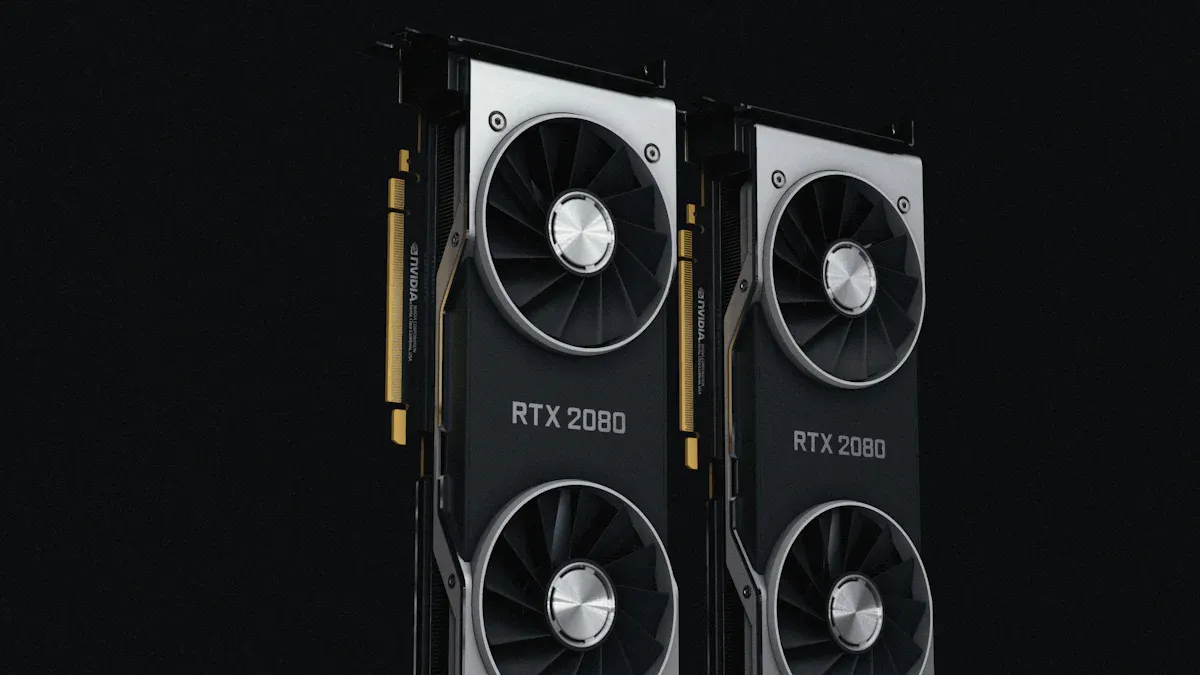
Choosing the right type of gpu cooler can make a big difference in your system’s performance and reliability. You have three main options: air coolers, liquid coolers, and hybrid coolers. Each type offers unique advantages and drawbacks. Understanding these differences helps you select the best solution for your needs.
Air Cooler
Air coolers use heat sinks and fans to move heat away from your GPU. Popular models like the Noctua NH-D15 deliver strong cooling and quiet operation.
Pros
- Simple installation process
- Lower cost compared to liquid and hybrid coolers
- Reliable with fewer points of failure
- Quiet operation in most cases
- Easy maintenance
Cons
- May struggle with high thermal loads, especially in compact cases
- Less effective for overclocked GPUs or multi-GPU setups
- Fans may need to spin faster under heavy workloads, which increases noise
- Typically handles TDPs up to 180–200 W
Note: Air coolers work well for standard gaming and everyday use, but you may notice limitations if you push your GPU to its limits.
Liquid Cooler
Liquid coolers, often called AIO (All-In-One) coolers, use pumps and radiators to transfer heat away from the GPU. These systems excel in high-performance setups.
Pros
- Superior heat transfer and cooling capacity
- Ideal for high TDP GPUs and overclocked systems
- Lower noise levels under heavy load
- Can handle TDPs around 280 W ±10%
- Sleek appearance and flexible installation options
Cons
Higher cost than air coolers
More complex installation process
Potential risk of leaks or pump failure
Requires regular maintenance
Liquid cooling systems generally provide better heat transfer and higher cooling capacities than air coolers, making them ideal for high-performance setups.
Liquid cooling is more efficient for overclocked systems, keeping temperatures lower than air cooling under load.
Hybrid Cooler
Hybrid coolers combine air and liquid cooling technologies. These systems use liquid cooling for the GPU core and air cooling for other components.
Pros
- Outstanding thermal performance in demanding environments
- Manages heat effectively in high-density GPU workloads
- Removes 70-75% of heat through liquid cooling
- Outperforms dedicated air coolers in thermal tests
- Suitable for users who need maximum cooling efficiency
Cons
- Higher price point than air or liquid coolers alone
- Installation can be complex
- May require more space inside your case
- Maintenance involves both air and liquid components
Hybrid GPU coolers use water’s heat transfer capabilities, which are 3,500 times greater than air. This allows them to keep your GPU cool even during intense workloads. You get the benefits of both cooling methods, making hybrid coolers a top choice for extreme performance.
| Cooler Type | Cooling Capacity | Noise Level | Cost | Best For |
|---|---|---|---|---|
| Air | Moderate | Low-Medium | Low | Standard gaming, budget |
| Liquid | High | Low | Medium-High | Overclocking, high TDP |
| Hybrid | Very High | Low | High | Extreme workloads |
Tip: If you run high TDP GPUs or plan to overclock, consider liquid or hybrid coolers for the best results.
Key Features
Compatibility
GPU Model
You must match your gpu cooler to your specific GPU model. High-end GPUs, such as the RTX 5090, produce significant heat. You need to consider cooler placement and airflow management for these powerful cards. The way you mount your cooler, whether as a top exhaust or side intake, can change cooling performance. If you pair a powerful GPU with a strong cooler, you can also affect CPU temperatures. Always check the manufacturer’s compatibility list before you buy.
- High-end GPUs require careful cooler placement and airflow management.
- Cooler configuration impacts both GPU and CPU temperatures.
- Mounting options, such as top exhaust or side intake, influence cooling efficiency.
Tip: Always review your GPU’s specifications and recommended cooler types before making a purchase.
Case Size
Your PC case size limits your gpu cooler options. Large coolers need enough space for proper installation. If you try to fit two large GPUs, you may lose at least two PCIe slots. The width of most GPUs, about 145mm from the motherboard, restricts clearance between the side panel and the bottom GPU. This makes vertical installation difficult. Airflow for the bottom GPU often suffers because there is only 10-18mm for air intake, especially if the power supply sits nearby.
- Limited space can prevent vertical GPU installation.
- Insufficient clearance between side panel and GPU restricts airflow.
- Power supply placement can block air intake for the bottom GPU.
Note: Measure your case and check for clearance before choosing a cooler. Proper airflow ensures stable performance.
Cooling Performance
TDP Ratings
Thermal Design Power (TDP) tells you how much heat your GPU produces. You need a gpu cooler that matches or exceeds your GPU’s TDP rating. If you use a cooler with a lower rating, your GPU may overheat during heavy use. Always check the TDP rating of both your GPU and the cooler before you buy.
- Match the cooler’s TDP rating to your GPU’s requirements.
- Higher TDP GPUs need advanced cooling solutions.
- Overclocking increases heat output, so plan for extra cooling capacity.
Multi-Fan Design
Multi-fan designs improve cooling performance by enhancing airflow distribution. Multiple fans work together to manage heat during intensive tasks. Manufacturers position fans to optimize airflow across heatsinks, which promotes even cooling. This design pushes hot air away from the GPU, helping maintain safe temperatures. Modern multi-fan setups often include temperature monitoring, which adjusts fan speeds for optimal performance and noise control.
- Multi-fan setups enhance airflow and heat dissipation.
- Fans are positioned to cool all components evenly.
- Temperature monitoring allows fans to adjust speeds for efficiency and noise reduction.
Tip: More fans do not always mean better cooling. The design and placement matter just as much as the number of fans.
Noise
Fan Technology
Fan technology plays a major role in noise levels. Air coolers often use larger fans that run at lower RPMs, which keeps noise down. Liquid coolers can introduce pump noise and extra fan noise from radiators. You can reduce noise by choosing coolers with larger fans and high-quality bearings. Optimal fan speeds, around 700-800 RPM, provide effective cooling with minimal sound.
- Larger fans allow for lower RPM operation and quieter cooling.
- High-quality bearings reduce vibration and noise.
- Liquid cooling systems usually operate more quietly than traditional air coolers.
Acoustic Features
You can minimize noise by selecting coolers with advanced acoustic features. Some GPUs, like those from ASUS ROG Strix and TUF series, use triple-fan heatsinks for efficient cooling and lower noise. Sound-dampening materials help absorb vibrations. Optimizing airflow inside your case improves cooling and reduces noise. You can also undervolt your GPU to lower heat and noise. Custom fan curves let you control fan speed based on workload. Water-cooling and hybrid solutions offer minimal noise for demanding setups.
- Triple-fan heatsinks provide efficient cooling and quieter operation.
- Sound-dampening materials absorb vibrations.
- Optimized airflow and undervolting reduce noise.
- Custom fan curves and water-cooling solutions offer precise noise control.
Tip: If you want a silent build, look for coolers with advanced acoustic features and consider undervolting your GPU.
Build Quality
When you select a gpu cooler, you need to pay close attention to build quality. High-quality construction ensures reliable performance and long-term durability. You should look for coolers made with advanced materials and backed by strong warranty terms.
Materials
Manufacturers use a range of materials to improve heat transfer and protect your GPU. Each material offers unique benefits for cooling efficiency and reliability. The table below shows the most common materials found in top-tier GPU coolers:
| Material | Thermal Conductivity (W/mK) | Key Benefits | Applications |
|---|---|---|---|
| Thermal Pads | 1.5-10.0 | Low thermal resistance, excellent thermal conductivity, self-adhesive, good fit, high reliability | Consumer Electronics, Industrial Equipment |
| Thermal Grease | 1-14.8 | Excellent thermal conductivity, good lubricity, low thermal resistance, suitable for high heat | High-Performance Systems, Overclocking |
| Thermal Gel | 2-8 | Excellent weather resistance, high and low temperature resistance, fills uneven gaps | Consumer Electronics, Mobile Devices |
| Phase Change Material | 8.5 | Adapts to varying thermal conditions, excellent heat dissipation performance | High-Performance Computing, Electronics Cooling |
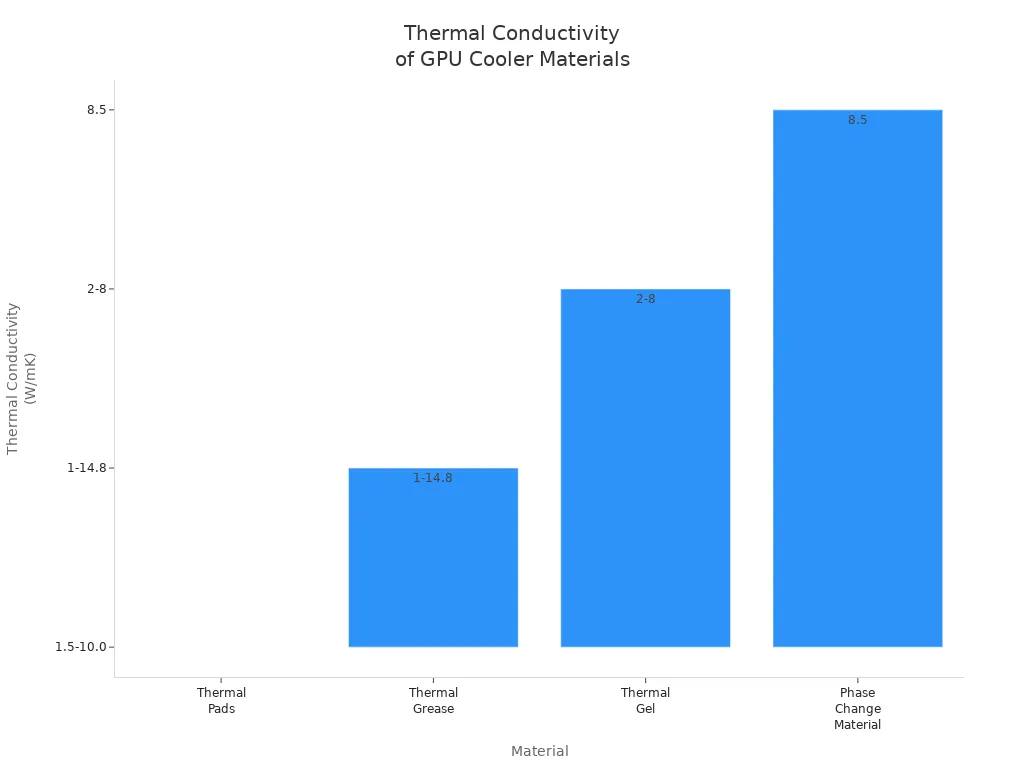
Thermal pads and thermal grease help transfer heat from the GPU to the cooler efficiently. Thermal gel fills gaps and resists extreme temperatures. Phase change materials adapt to changing conditions and provide excellent heat dissipation. You should choose a gpu cooler that uses high-quality thermal compounds to keep your system running at safe temperatures.
Tip: Always check the specifications for the type of thermal interface material used. Superior materials can make a noticeable difference in cooling performance.
Warranty
Warranty coverage gives you peace of mind when investing in a gpu cooler. Top brands offer warranties that protect you against defects and manufacturing issues. You should review the warranty terms before making a purchase. The table below summarizes typical warranty terms from leading brands:
| Brand | Warranty Duration | Conditions |
|---|---|---|
| AORUS | Varies by product | Defects in materials and workmanship under normal use |
| Zotac | 5 years (3 years standard + 2 years extended upon registration) | Non-transferable, requires proof of purchase |
| ASUS | Limited Warranty Period starts from purchase date | Defects in materials or workmanship under normal use |
You can expect the following from major brands:
- AORUS covers defects in materials and workmanship, with duration depending on the product.
- Zotac provides a 5-year warranty if you register your product, but you must keep your proof of purchase.
- ASUS offers a limited warranty that starts from the purchase date and covers defects under normal use.
Note: Always keep your purchase receipt and register your product if required. This ensures you receive full warranty benefits.
A strong warranty reflects the manufacturer’s confidence in their product. You should prioritize gpu coolers with clear and generous warranty terms to protect your investment.
Best GPU Cooler Models
Choosing the right gpu cooler can transform your system’s performance and reliability. You want a model that delivers strong cooling, quiet operation, and good value. Below, you will find top picks for air, liquid, and hybrid coolers. Each recommendation stands out for its performance, build quality, and user satisfaction.
Air Cooler Picks
Air coolers remain a popular choice for many users. They offer reliable cooling with simple installation and low maintenance. If you want a balance of performance and affordability, consider these top models:
Noctua NH-D15 G2
This cooler consistently ranks at the top in professional reviews. It features a dual-tower design and two large fans. You get excellent thermal performance and very low noise, even under heavy loads. The build quality is outstanding, and it fits most modern GPUs with the right mounting kit.ID Cooling A720
This model surprises many users with its solid build and effective cooling. It handles moderate to high thermal loads well. The A720 also offers a sleek design and easy installation, making it a great choice for first-time builders.Arctic Freezer 36
If you want strong performance at a competitive price, the Arctic Freezer 36 stands out. It works especially well with Intel systems. The multi-fan setup ensures even heat distribution, and the cooler runs quietly during gaming or creative work.
Tip: For best results, always apply a high-quality thermal paste when installing your air cooler. This step improves heat transfer and keeps your GPU running at safe temperatures.
Liquid Cooler Picks
Liquid coolers, often called AIO (All-In-One) coolers, deliver superior thermal performance. They use a pump, radiator, and fans to move heat away from your GPU. If you plan to overclock or use a high-end graphics card, these models offer excellent results:
Corsair Hydro X Series XG7 RGB
This cooler provides outstanding cooling for demanding GPUs. The full-cover water block design cools both the GPU core and memory modules. You get customizable RGB lighting and a quiet pump. The XG7 works well in custom loop setups and supports many popular graphics cards.NZXT Kraken G12 + X53 Combo
The Kraken G12 bracket lets you mount an NZXT AIO liquid cooler onto your GPU. Paired with the X53, you get strong cooling and low noise. The combo supports a wide range of GPUs and fits in most mid-tower cases. The dual-fan radiator design ensures stable temperatures during long gaming sessions.EVGA CLC Hybrid Kit
This kit combines a closed-loop liquid cooler with a dedicated fan for the VRAM and power delivery components. You get efficient cooling for both the GPU and surrounding parts. The installation process is straightforward, and the cooler runs quietly even under stress.
Note: Liquid coolers require careful installation. Make sure you secure all fittings and check for leaks before powering on your system.
Hybrid Cooler Picks
Hybrid coolers blend the strengths of air and liquid cooling. They use a liquid loop for the GPU core and fans for other components. If you need maximum cooling for overclocking or workstation tasks, these models deliver:
ASUS ROG Strix LC RTX Series
This hybrid cooler uses a closed-loop liquid system for the GPU and a large fan for the VRAM and power delivery. You get excellent thermal performance and low noise. The design fits most high-end cases and supports RGB customization.MSI Sea Hawk X
MSI’s Sea Hawk X combines a Corsair liquid cooler with a custom shroud and fan. The liquid loop cools the GPU core, while the fan handles the memory and VRMs. You benefit from easy installation and reliable performance, even during intense workloads.Gigabyte AORUS Waterforce Xtreme
This model features a 240mm radiator and triple-fan design. The hybrid approach keeps the GPU cool and quiet. The Waterforce Xtreme also includes a reinforced backplate and customizable lighting.
| Model | Cooling Type | Noise Level | Notable Features |
|---|---|---|---|
| Noctua NH-D15 G2 | Air | Very Low | Dual-tower, multi-fan, premium |
| Corsair Hydro X Series XG7 | Liquid | Low | Full-cover, RGB, custom loop |
| ASUS ROG Strix LC RTX Series | Hybrid | Low | Closed-loop, RGB, large fan |
Pro Tip: Hybrid coolers often require more space inside your case. Always check your case dimensions before buying.
When you select a gpu cooler from these top models, you ensure your graphics card stays cool, quiet, and reliable. Multi-fan designs and proper thermal interface application further boost cooling efficiency and system stability.
Installation Tips
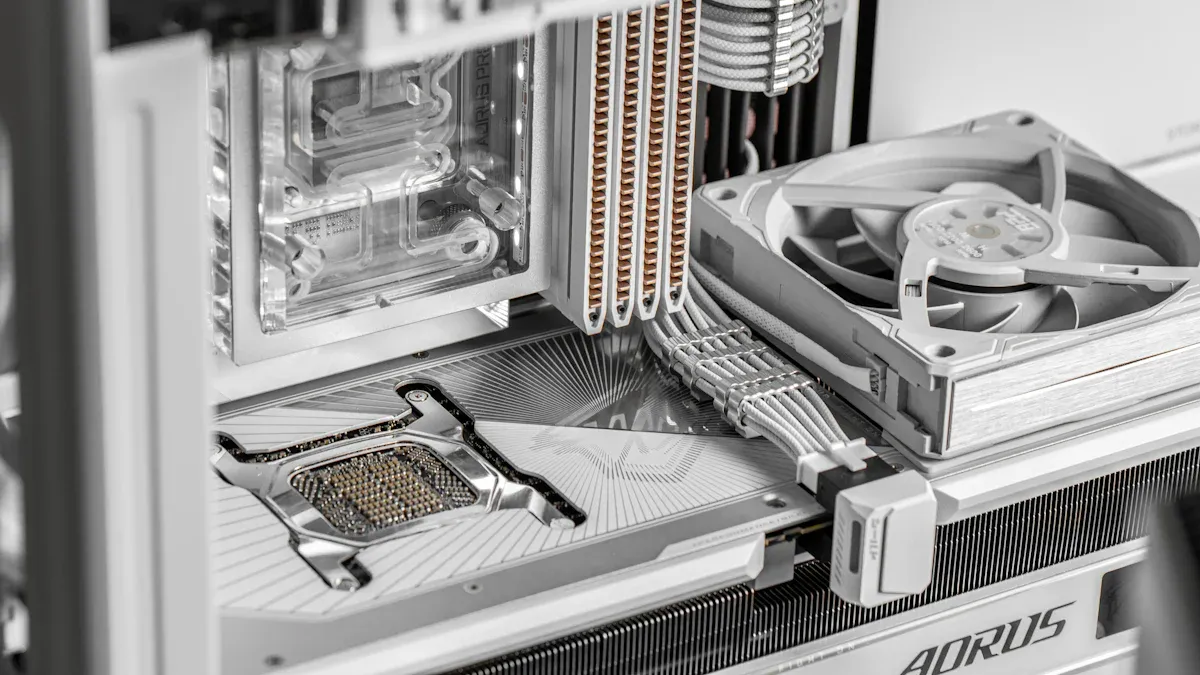
Preparation
Before you install a new gpu cooler, you need to set up your workspace for safety and efficiency. A well-prepared area helps you avoid mistakes and protects your components. Follow these tips to get started:
- Choose a spacious workspace so you can move comfortably during installation.
- Place a towel or soft pad under your PC case to prevent scratches when you lay it on its side.
- Make sure the area is well-lit. Use a flashlight if you need extra visibility in tight spots.
- Protect your hardware from static electricity. Wear an anti-static wrist strap and work on a solid floor, not carpet.
Tip: Take your time with preparation. A clean and organized workspace reduces the risk of damaging your GPU or other parts.
Steps
Installing a gpu cooler requires careful attention to detail. Use this step-by-step guide to ensure a smooth process:
- Check Compatibility
Confirm that your case has enough space for the cooler and that it matches your GPU model. - Gather Tools
Collect a Phillips screwdriver, thermal paste, and any mounting brackets included with your cooler. - Prepare the Cooler
Apply a small amount of thermal paste to the GPU if needed. Attach the mounting brackets according to the instructions. - Mount the Radiator or Heatsink
Decide where to place the radiator or heatsink. Secure it inside the case using the provided screws. - Install the Cooler Block
Align the cooler block over the GPU and fasten it firmly, but do not overtighten. - Connect Cables
Attach the fan and pump cables to the correct headers on your motherboard. - Double-Check Everything
Inspect all connections and make sure tubes or cables do not block airflow. Close the case when you finish.
Note: Always follow the manufacturer’s instructions for your specific cooler model. Each design may have unique steps or requirements.
Mistakes
Many users make common mistakes during installation. Avoid these pitfalls to protect your hardware and ensure optimal cooling:
- Forgetting to check compatibility between the cooler and your GPU or case.
- Using too much or too little thermal paste, which can reduce heat transfer.
- Overtightening screws, which may damage the GPU or cooler.
- Failing to connect all cables, leading to non-functional fans or pumps.
- Blocking airflow with poorly routed cables or tubes.
Alert: If you notice high temperatures or loud noises after installation, shut down your system and inspect your work. Address issues before using your PC for demanding tasks.
Maintenance
Proper maintenance keeps your gpu cooler running efficiently and extends the life of your graphics card. You should set up a regular cleaning schedule based on your environment. Dust, pet hair, and humidity can all affect cooling performance. If you ignore maintenance, you risk overheating and reduced system stability.
Start by inspecting your gpu cooler at intervals that match your workspace. The table below shows how often you should check and deep clean your cooler in different environments:
| Environment | Inspection Frequency | Deep Clean Interval |
|---|---|---|
| Office/Clean Room | Every 3 months | 4-6 months |
| Moderate Gaming | Monthly | 2-3 months |
| Dusty/Humid Areas | Bi-weekly | 30 days |
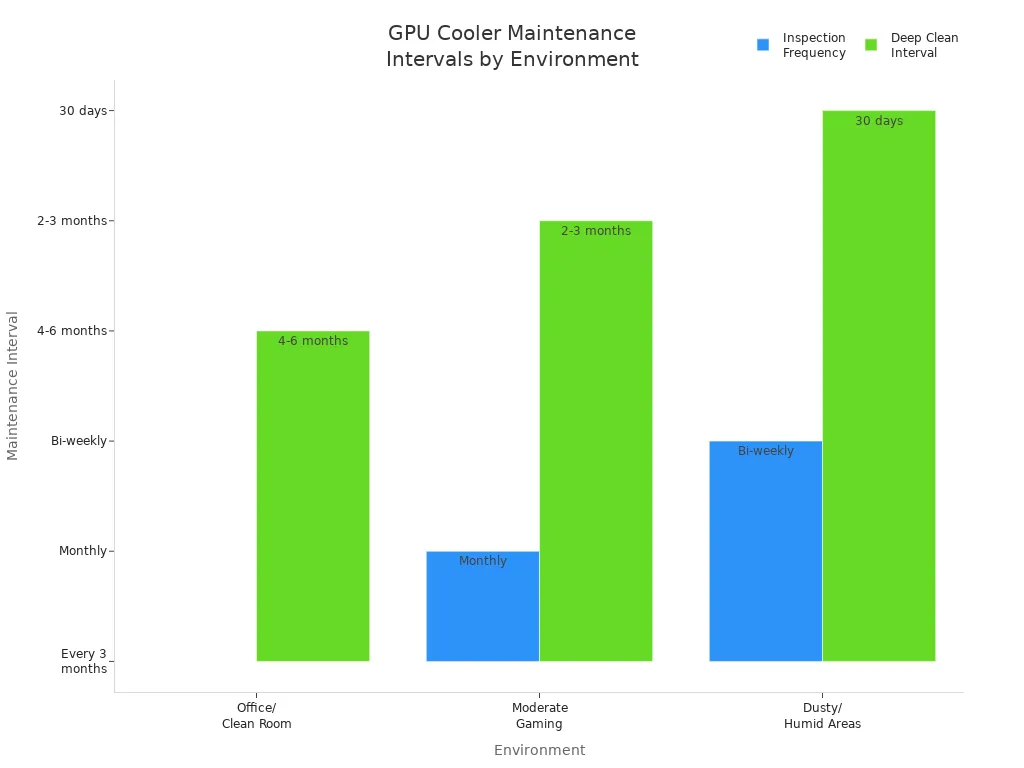
You should always clean fan blades and grills to prevent dust buildup. Use a can of compressed air or a soft brush to remove debris. Pay close attention to the heatsink fins, as dust can block airflow and raise temperatures. For liquid or hybrid coolers, check the radiator and fans for dust and make sure there are no leaks or signs of corrosion.
Reapplying thermal paste every 1-2 years helps maintain effective heat transfer between your GPU and the cooler. If you notice rising temperatures or unstable performance, consider replacing the thermal paste sooner. Always use a high-quality thermal compound for the best results.
Here are some practical maintenance tips:
- Clean fan blades and grills regularly to keep airflow strong.
- Reapply thermal paste as needed to maintain cooling efficiency.
- Install high-end fans if you want to improve airflow.
- Undervolt your GPU to reduce heat and stress on the cooler.
- Set reminders for regular maintenance based on your environment.
Tip: If you use your PC in a dusty or humid area, increase the frequency of inspections and deep cleans. This simple step can prevent overheating and hardware failure.
Regular maintenance not only keeps your gpu cooler performing at its best but also protects your investment. By following these routines, you ensure stable temperatures, quiet operation, and a longer lifespan for your graphics card.
Selecting the right gpu cooler starts with checking compatibility, cooling performance, noise, and build quality. You should always match the cooler type to your GPU’s TDP and your own needs. The table below highlights how vapor chamber and liquid cooling options compare for different TDP and space requirements:
| Criteria | Vapor Chamber | Liquid Cooling |
|---|---|---|
| TDP Support | Up to ~200W | Over 300W, scalable |
| Space Efficiency | Very compact | Needs pumps, tubes, radiators |
| Noise | Silent | Fans and pumps produce noise |
| Reliability | Low maintenance | Needs periodic maintenance |
| Cost | Moderate to high | Higher initial investment |
Regular maintenance ensures your gpu cooler delivers peak performance. Practices like thermal management, ventilation, and fan inspection help prevent overheating and extend hardware life:
| Maintenance Practice | Impact on GPU Coolers |
|---|---|
| Thermal Management | Ensures optimal thermal performance |
| Ventilation | Prevents overheating by allowing proper airflow |
| Fan Inspection | Maintains effective cooling by ensuring fan operation |
| Heat Sink Maintenance | Keeps heat dissipation efficient and effective |
| Professional Inspection | Identifies potential issues before they affect performance |
Before you decide, research these essentials:
- Compatibility with your GPU and case
- Cooling performance and TDP support
- Noise levels
- Build quality and durability
Take time to evaluate your setup and choose a gpu cooler that fits your system and goals. Proper installation and regular care will keep your graphics card running strong for years.
FAQ
What is the most important factor when choosing a GPU cooler?
You should prioritize compatibility with your GPU and case. If the cooler does not fit, you cannot install it. Always check the manufacturer’s compatibility list before you buy.
Can you use a CPU cooler on a GPU?
Most CPU coolers do not fit GPUs without special brackets or adapters. You should only use coolers designed for GPUs or kits that support GPU mounting.
How often should you clean your GPU cooler?
You should inspect and clean your GPU cooler every 2-3 months. Dust buildup can block airflow and raise temperatures. Use compressed air or a soft brush for best results.
Do liquid GPU coolers require maintenance?
Yes. You need to check for leaks, clean the radiator, and monitor pump noise. Most AIO liquid coolers are low-maintenance, but custom loops need more attention.
Will a better GPU cooler improve gaming performance?
A high-quality cooler keeps your GPU at lower temperatures. This prevents thermal throttling and allows your graphics card to maintain higher clock speeds during gaming.
What happens if your GPU cooler fails?
If your GPU cooler fails, your graphics card can overheat quickly. You may see crashes, shutdowns, or permanent damage. Always monitor temperatures and replace faulty coolers immediately.
Are hybrid GPU coolers worth the investment?
Hybrid coolers offer excellent thermal performance and low noise. If you overclock or use your PC for demanding tasks, you will benefit from the extra cooling capacity.

